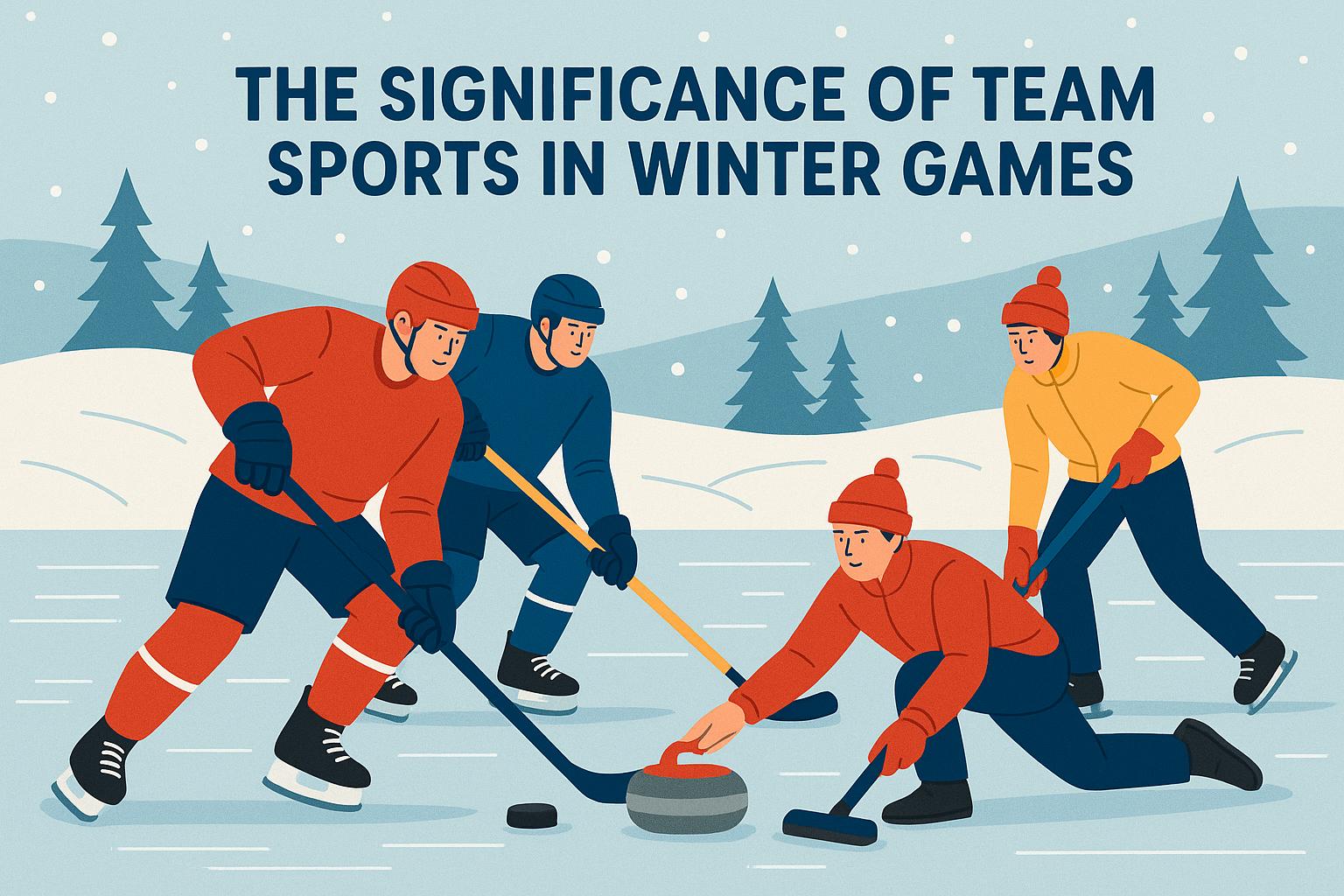The Importance of Team Sports in Winter Games
Winter sports have long captivated audiences around the world, and while individual events such as skiing or figure skating often grab headlines, team sports play an equally significant role in the Winter Games. These sports not only provide entertainment but also play a critical part in fostering teamwork, developing skills, and promoting international camaraderie. Throughout the history of the Winter Games, team sports have contributed to the richness and diversity of the events, offering spectators thrilling competition and showcasing the intricate dynamics of human cooperation under pressure.
Enhancing Teamwork and Collaboration
Team sports such as ice hockey and curling are quintessential to the Winter Games, emphasizing the intrinsic value of teamwork and collaboration. Athletes participating in these sports understand the necessity of seamless communication and coordination. For example, on an ice hockey team, each player’s role contributes to the overall strategy employed by the team. Defensemen, forwards, and goalkeepers need to function as a cohesive unit, with precise passing, strategic positioning, and anticipatory movements being second nature due to practiced synergy. The players’ relationships transcend individual ambition, reflecting a shared dedication to achieving a collective goal. This shared effort underscores the indispensable need for synchronized actions and mutual understanding. Without such coordination and trust, even the most physically gifted team cannot achieve sustained success in these grueling environments.
Skill Development and Strategy
Engagement in team sports facilitates the development of a broad spectrum of skills beyond mere physical prowess. For players, these sports demand a blend of tactical acumen and adaptability. Athletes must continuously refine their sense of strategy and situational analysis as they anticipate opponents’ moves and dynamically counteract these maneuvers. The hallmark of curling, for example, lies in the precise delivery and strategic placement of stones. Players, in synergy with their teammates, employ strategic sweeping to manipulate the stone’s path and speed, a nuanced craft that underscores the importance of non-verbal communication during intense scenarios. The ability to react fluidly to changing situations hones athletes’ tactical thinking and enhances their problem-solving skills in real-time, better preparing them for varied scenarios both within and beyond sports arenas.
In ice hockey, strategic formations and line plays are vital for maneuvering through the opposition’s defenses and creating scoring opportunities. The constant motion and tempo necessitate not only physical agility but also rapid decision-making skills. Players are continuously processing information, assessing the positions of their teammates and opponents to make split-second decisions, all underscoring the game’s mental demands.
Promoting International Camaraderie
The Winter Games, by their very design, serve as an unparalleled platform for international teams to engage in competitive yet congenial exchanges. This global stage offers an opportunity for cultural interaction and camaraderie that transcends the confines of conventional rivalries. Teams from different countries experience shared challenges and triumphs, thereby building meaningful connections. Over time, these bonds contribute to a palpable sense of global unity. The spirit of camaraderie is embodied in rituals such as the post-game handshake, which stands as a testament to the respect, humility, and sportsmanship engrained within the framework of the games. Regardless of the event outcome, these gestures highlight the connective power of sportsmanship and mutual admiration, which often leads to lifelong friendships among competitors.
The Role of Team Sports in the Success of the Winter Games
The significant contribution of team sports to the overall success of the Winter Games cannot be overstated. These events command substantial viewership not only due to their inherent unpredictability but also because they represent the resilient human spirit. The athletic prowess displayed, combined with genuine moments of teamwork and strategy, captivates audiences worldwide, making these events a vital component of the games.
The excitement generated by team sports—through close matches, spectacular displays of skill, and dramatic comebacks—draws in dedicated audiences and generates broader appeal, even attracting casual sports fans who might not otherwise engage with winter athletics. Such elements serve to enliven the games, fostering a sense of anticipation and community within stadiums and across screens globally.
The broader impact of team sports on the Winter Games extends to their substantial role in cultivating an inclusive, compelling narrative of global participation and celebration of diverse athletic talents. The matches are internationally broadcasted, making them accessible to a wide array of spectators who may synthesize personal, cultural, and national pride in concert with their experience of the games.
In conclusion, team sports within the Winter Games have an expansive influence on both participants and spectators. They highlight the paramount importance of collaboration, assist in the development of essential skills, facilitate international camaraderie, and contribute crucially to the games’ triumph as a global event. These components underscore the pivotal and revered position that team sports occupy in the realm of winter athletic competition, without which the spirit and spectacle of the Winter Games would be fundamentally diminished. They continue to inspire, challenge, and unite both athletes and audiences in a shared appreciation of human endeavor and excellence.
